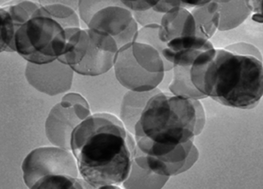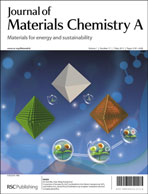Hematite nanodiscs exposing (001) facets: synthesis, formation mechanism and application for Li-ion batteries†
Abstract
27 nm thick hematite nanodiscs have been prepared by a facile solvothermal method. The growth of Fe2O3 nanodiscs follows the precipitation–dissolution–growth mechanism, and the (001) facets are preferentially exposed since (001) facets are the densest and therefore most stable facets. In particular, outstanding rate and cycling capabilities have been demonstrated for the nanodiscs due to the reduced Li+ diffusion distance and enhanced reactivity of the nanosized structures.


 Please wait while we load your content...
Please wait while we load your content...